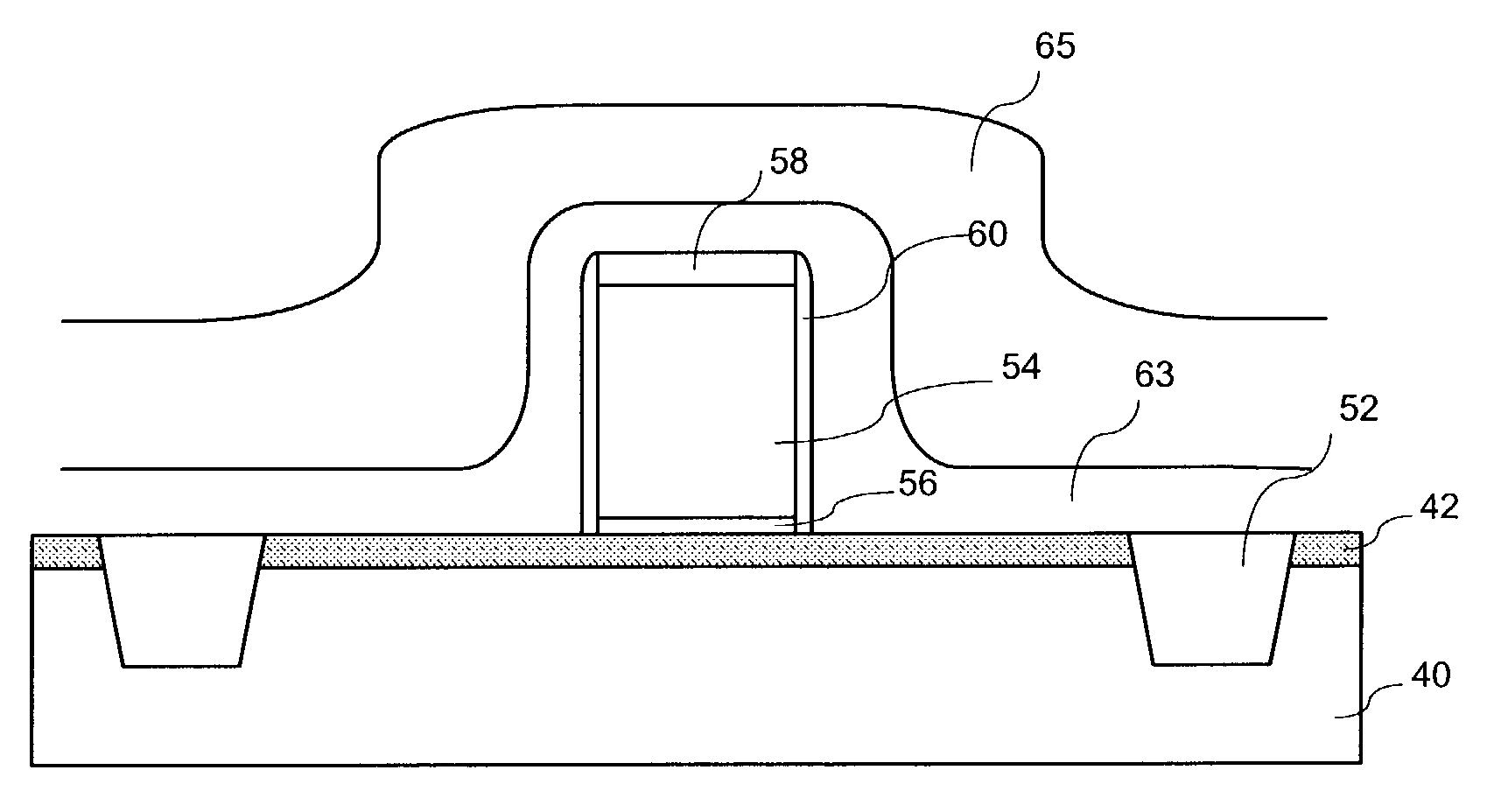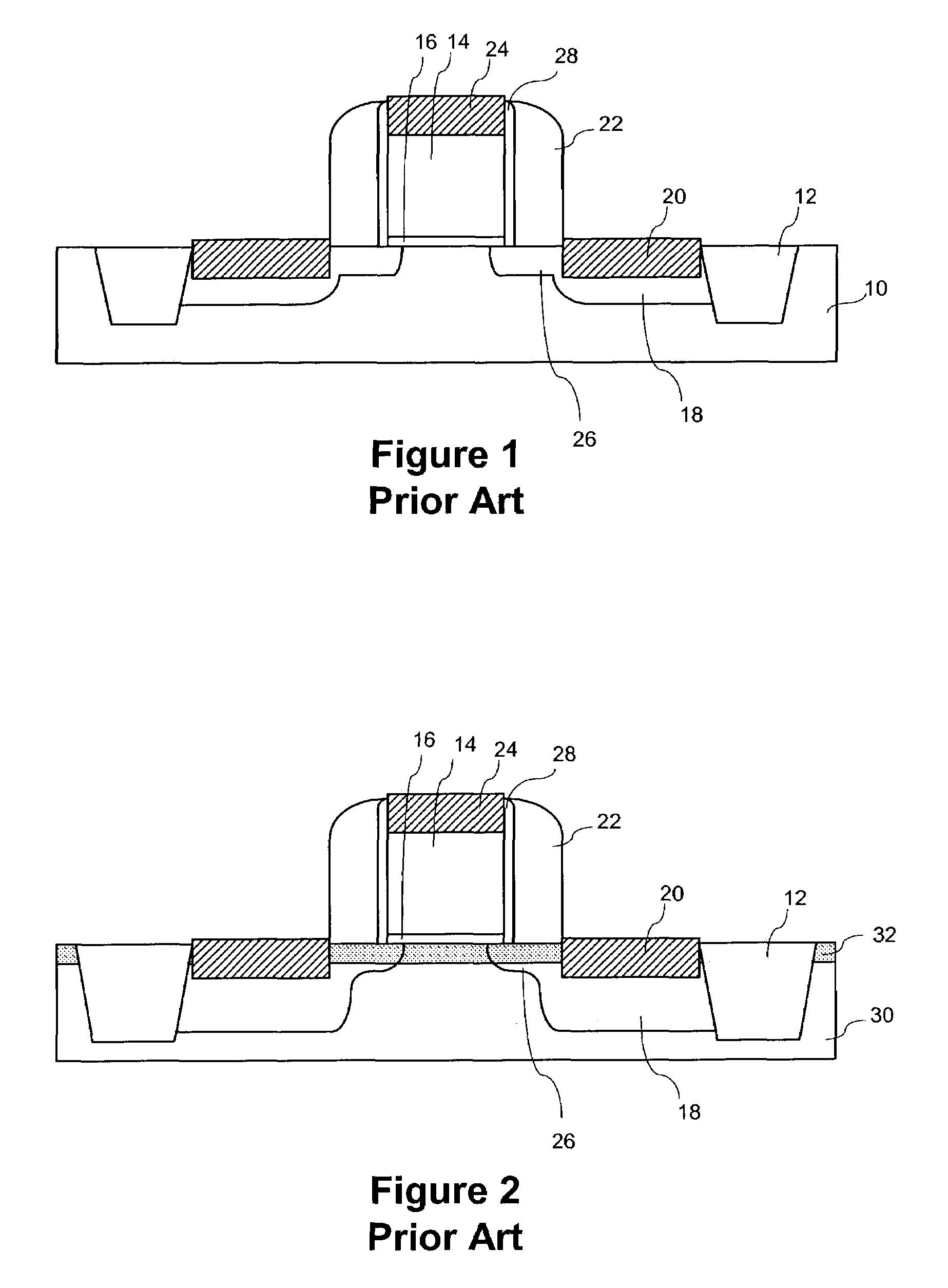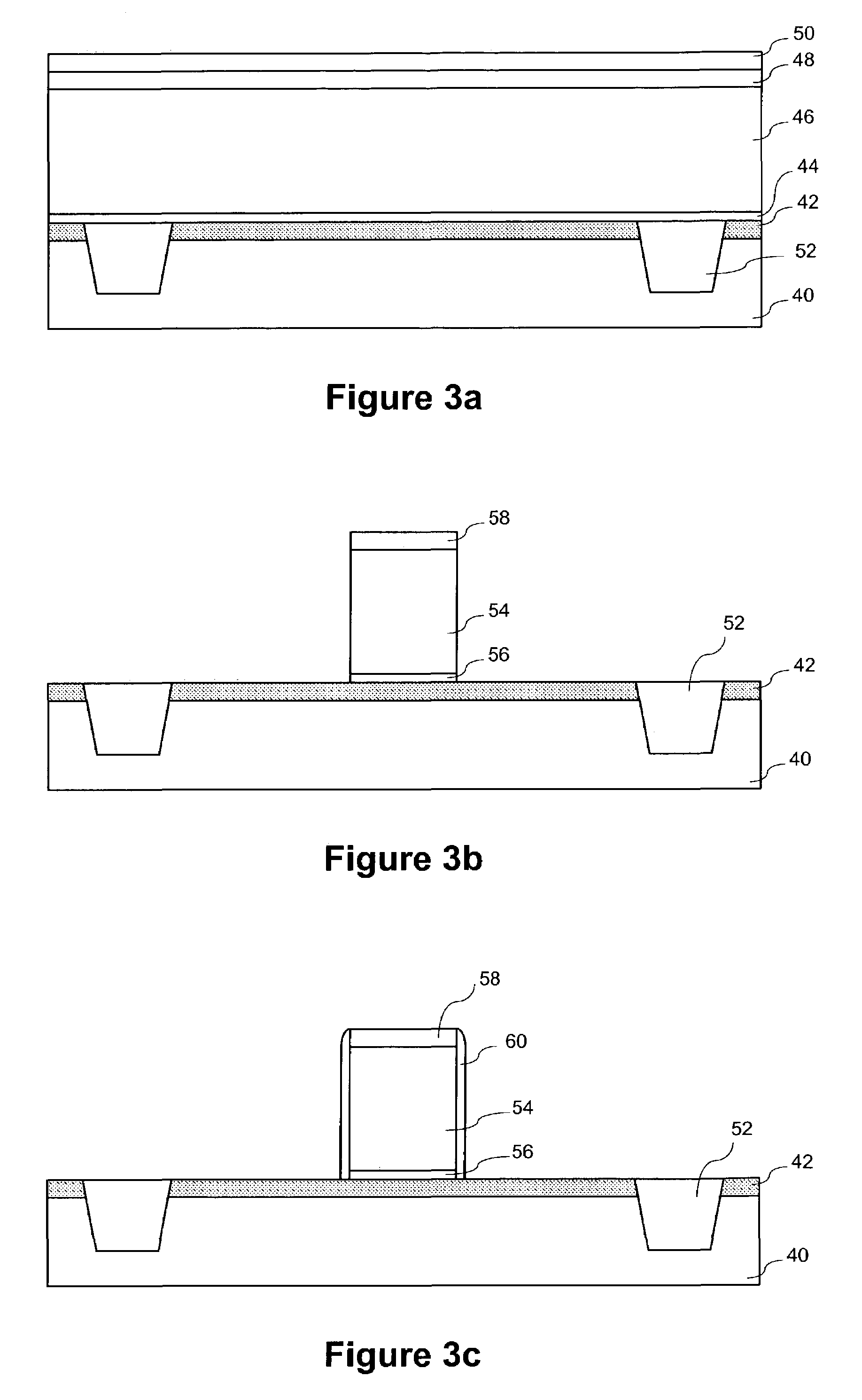Semiconductor with tensile strained substrate and method of making the same
- Summary
- Abstract
- Description
- Claims
- Application Information
AI Technical Summary
Benefits of technology
Problems solved by technology
Method used
Image
Examples
Embodiment Construction
[0024]FIGS. 3a–3i illustrate structures formed during fabrication of a strained silicon MOSFET in accordance with an exemplary embodiment. FIG. 3a shows a structure comprising a layer of silicon germanium 40 having an epitaxial layer of silicon 42 formed on its surface. The silicon germanium layer 40 preferably has a composition Si1-xGex, where x is approximately 0.2, and is more generally in the range of 0.1 to 0.3.
[0025]The silicon germanium layer 40 is typically grown on a silicon wafer. Silicon germanium may be grown, for example, by chemical vapor deposition using Si2H6 (disilane) and GeH4 (germane) as source gases, with a substrate temperature of 600 to 900 degrees C., a Si2H6 partial pressure of 30 mPa, and a GeH4 partial pressure of 60 mPa. SiH4 (silane) may be used in alternative processes. Growth of the silicon germanium material may be initiated using these ratios, or alternatively the partial pressure of GeH4 may be gradually increased beginning from a lower pressure or ...
PUM
 Login to View More
Login to View More Abstract
Description
Claims
Application Information
 Login to View More
Login to View More - R&D Engineer
- R&D Manager
- IP Professional
- Industry Leading Data Capabilities
- Powerful AI technology
- Patent DNA Extraction
Browse by: Latest US Patents, China's latest patents, Technical Efficacy Thesaurus, Application Domain, Technology Topic, Popular Technical Reports.
© 2024 PatSnap. All rights reserved.Legal|Privacy policy|Modern Slavery Act Transparency Statement|Sitemap|About US| Contact US: help@patsnap.com










